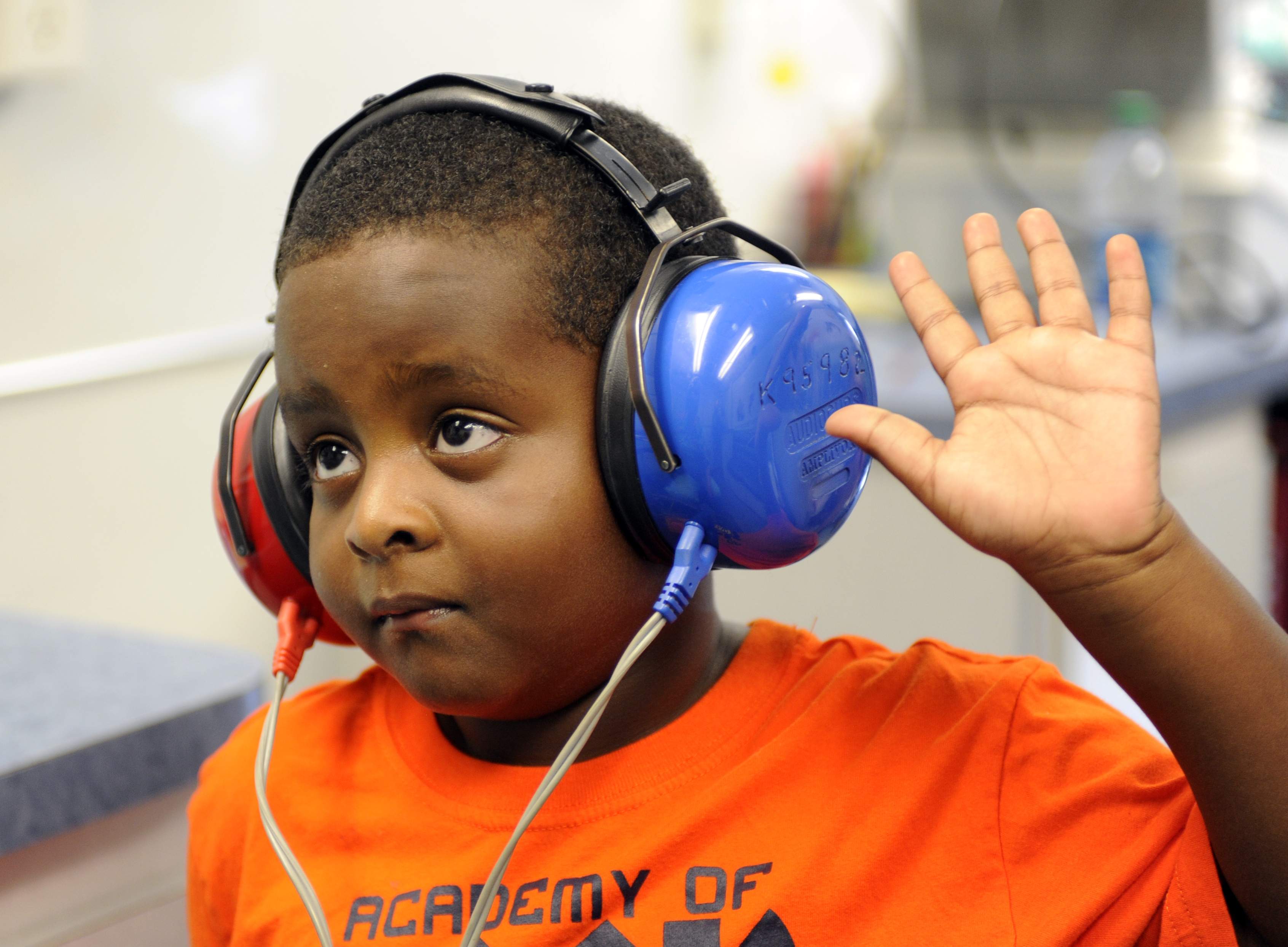It’s that time of year again: the days are getting shorter, the leaves are just starting to fall, and the kids are back in school. Maryland statue (7-404) and regulations (05.05.07) ensures that school-aged children receive a hearing screening the year the child enters school, in first grade, and when he or she enters eighth or ninth grade (depending on the school system).
A hearing screening is a pass/fail test that is typically completed at four different frequencies: 500 Hz, 1000 Hz, 2000 Hz, and 4000 Hz at a level of 25 dB HL. The screening program is often administered by an audiologist or speech-language pathologist; trained educators and parents may also help provide the screenings when necessary. Since most schools do not have a dedicated audiology space or sound-proof booth, a quiet room – such as the library – may be used to conduct the hearing screenings. Like vision screenings, the hearing screening results are part of the student’s permanent record. Parents also receive a notice if the student does not pass the screening.
Hearing is extremely important to a child’s learning in the classroom. The American Speech-Language-Hearing Association (ASHA) estimates that teachers use their voice at least 60% of the day. The American National Standards Institute (ANSI) sets standards for acoustics in the classroom:
• Unoccupied classrooms noise levels are not to be louder than 35 dBA,
• The signal-to-noise ratio (the difference between the teacher speaker and the background noise) should be at least +15 dB at the child’s ear; and
• Unoccupied classroom reverberation (echo) must not surpass 0.6 seconds in small areas and 0.7 seconds in large area.
If your child was “referred” after a failed hearing screening, or you feel as though she or he may benefit from a comprehensive hearing test, call Designer Audiology to schedule a hearing evaluation. We test children of all ages!

